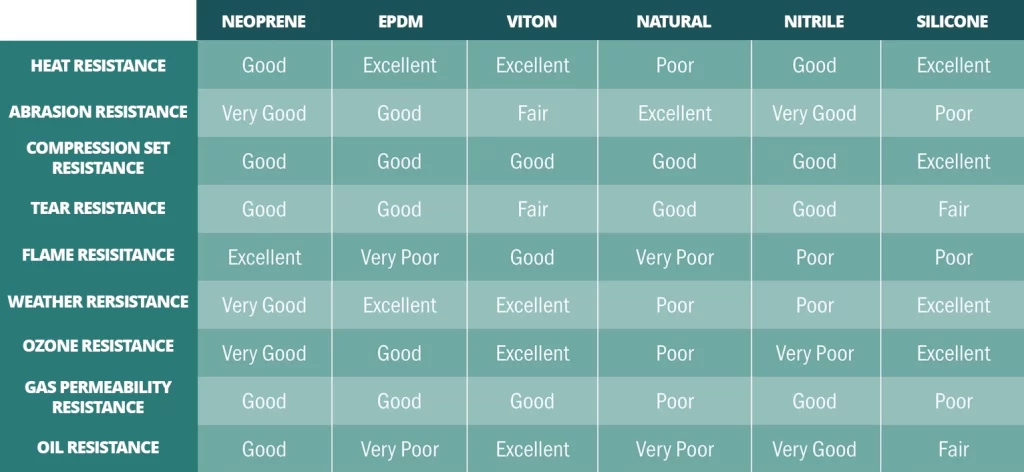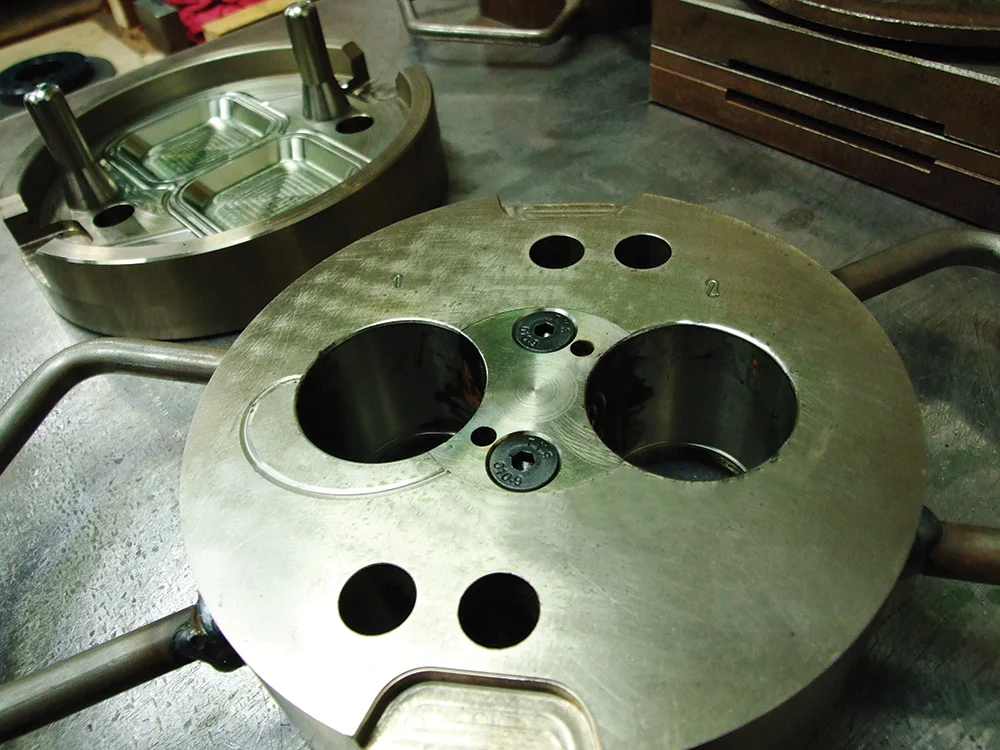Maximising Efficiency and Quality with Compression Rubber Moulding
Introduction to Compression Moulding
Compression rubber moulding is a widely used manufacturing process in which rubber is compressed and moulded into various shapes and forms. It is a cost-effective and efficient method for producing high-quality rubber products. This article will provide an in-depth overview of compression rubber moulding, its advantages, applications, materials used, and tips for maximising efficiency.
The Process of Compression Moulding
 Compression moulding involves several key steps to transform raw rubber materials into finished products. First, the rubber material is preheated to increase its plasticity and make it easier to shape. Then, the rubber is placed into a heated mould cavity. The mould is closed, and pressure is applied to compress the rubber, causing it to take the shape of the mould. The heat and pressure are maintained until the rubber cures and solidifies. Finally, the mould is opened, and the finished product is removed.
Compression moulding involves several key steps to transform raw rubber materials into finished products. First, the rubber material is preheated to increase its plasticity and make it easier to shape. Then, the rubber is placed into a heated mould cavity. The mould is closed, and pressure is applied to compress the rubber, causing it to take the shape of the mould. The heat and pressure are maintained until the rubber cures and solidifies. Finally, the mould is opened, and the finished product is removed.
The compression moulding process offers flexibility in terms of shape and size. It can accommodate intricate designs and produce products with consistent dimensions. The process is suitable for small-volume and heavier or large-dimension part production.

Advantages of Using Compression Moulding
Compression rubber moulding offers several advantages over other manufacturing methods. Firstly, it allows for the production of complex shapes and designs with precise detailing. The process ensures consistent and uniform distribution of materials throughout the product, resulting in excellent dimensional stability.
Secondly, compression rubber moulding is highly cost-effective. The initial tooling costs are relatively low compared to other methods, making it a viable option for small runs. Additionally, the process eliminates the need for excess material, reducing waste and saving costs in the long run.
Furthermore, compression rubber moulding enables the use of a wide range of rubber materials, including natural rubber, silicone, Viton and Polyurethanes. This versatility allows for the production of products with varying hardness, flexibility, and resistance to chemicals, temperature, and wear.

Applications of Compression Rubber Moulding
Compression rubber moulding finds application in numerous industries due to its versatility and efficiency. One of the most common applications is in the classic automotive industry, where it is used for short-run manufacturing gaskets, seals, and vibration dampeners. The ability to produce customised rubber components with tight tolerances makes compression rubber moulding ideal for automotive applications.
In the aerospace industry, compression rubber moulding is utilised for producing rubber seals, grommets, and other large components that require excellent resistance to extreme temperatures and harsh environments. The process ensures the production of durable and reliable parts that meet stringent safety standards.

Common Materials Used in Compression Moulding
A wide range of rubber materials can be used in compression moulding, each with its unique properties and characteristics. Natural rubber offers excellent elasticity, tear resistance, and low-temperature properties. It is commonly used in applications that require high resilience and flexibility.
Rubber compounds, such as nitrile rubber, silicone rubber, and EPDM rubber, are widely used in compression rubber moulding. Nitrile rubber is known for its excellent resistance to oil, fuel, and chemicals, making it suitable for gaskets and seals in automotive and industrial applications. Silicone rubber exhibits outstanding heat resistance and is commonly used in high-temperature applications, such as electronic and aerospace components. EPDM rubber is highly resistant to weathering, ozone, and UV radiation, making it ideal for outdoor applications.
Elastomers, such as polyurethane and fluorocarbon rubber, are also used in compression rubber moulding. Polyurethane offers exceptional abrasion resistance and load-bearing capabilities, making it suitable for applications that require high durability. Fluorocarbon rubber, commonly known as Viton, exhibits excellent resistance to chemicals and extreme temperatures, making it ideal for applications in the chemical and petrochemical industries.

Factors to Consider When Choosing a Rubber Moulding Supplier
Choosing the right compression moulding supplier is crucial to ensure the quality and efficiency of the manufacturing process. Several factors should be taken into account when selecting a supplier:
- Experience and Expertise: Look for suppliers with extensive experience in compression rubber moulding and a track record of producing high-quality products. Assess their technical expertise, manufacturing capabilities, and understanding of your specific requirements.
- Quality Assurance: Ensure that the supplier has robust quality control measures in place to guarantee the consistency and reliability of the produced parts. Look for certifications and accreditations that demonstrate their commitment to quality.
- Material Selection: Check if the supplier offers a wide range of rubber materials suitable for your application. Consider their knowledge of different rubber formulations and their ability to recommend the most suitable material for your specific needs.
- Production Capacity: Evaluate the supplier’s production capacity to ensure they can meet your volume requirements within the desired timeframe. Consider factors such as lead times, production flexibility, and scalability.
- Cost and Pricing: Compare the pricing structures of different suppliers while considering the overall value they offer. Look for suppliers who provide competitive pricing without compromising on quality.
Tips for Maximising Efficiency
Efficiency is crucial in the compression rubber moulding process to optimize production output and reduce costs. Here are some tips to maximise efficiency:
- Optimise Tool Design: Work closely with tool designers to create tool that minimise material waste and ensure efficient rubber flow during the compression process.
- Preheating and Curing Optimisation: Fine-tune the preheating and curing parameters to minimise cycle times while ensuring proper curing of the rubber. Conduct thorough testing and analysis to identify the optimal temperature and time settings.
- Continuous Process Improvement: Implement a culture of continuous improvement by regularly evaluating and optimising the manufacturing process. Encourage feedback from operators and technicians and invest in training programs to enhance their skills and knowledge.
- Maintenance and Calibration: Regularly maintain and calibrate the compression moulding machines to ensure they operate at peak efficiency. Schedule preventive maintenance activities and conduct routine checks to identify and address any issues promptly.
Quality Control
 Maintaining high quality in compression rubber moulding is essential to meet customer expectations and ensure the longevity of the produced parts. Here are some key aspects of quality control:
Maintaining high quality in compression rubber moulding is essential to meet customer expectations and ensure the longevity of the produced parts. Here are some key aspects of quality control:
- Raw Material Inspection: Perform thorough inspections of incoming rubber materials to verify their quality and suitability for the intended application. Test the materials for properties such as hardness, tensile strength, and elongation.
- In-Process Monitoring: Implement robust in-process monitoring systems to detect any deviations or defects during the manufacturing process. Use techniques such as visual inspection, dimensional measurements, and material testing to ensure conformity to specifications.
- Final Product Inspection: Conduct comprehensive inspections of the finished products to ensure they meet all required specifications and standards. Use appropriate testing methods to assess properties such as hardness, compression set, and chemical resistance.
- Documentation and Traceability: Maintain accurate and detailed records of all quality control activities, including inspection results, test reports, and certifications. This documentation enables traceability and provides evidence of compliance with regulatory requirements.
- Continuous Improvement: Continuously analyse quality control data to identify trends, patterns, and areas for improvement. Implement corrective and preventive actions to address any quality issues and enhance overall process performance.

Conclusion and Future Trends
Compression moulding offers numerous advantages in terms of efficiency, quality, and cost-effectiveness. Its versatility and ability to produce complex shapes make it a preferred choice in various industries. As technology advances, further improvements in automation, material formulations, and process optimisation are expected. This will lead to even higher efficiency and quality standards in compression rubber moulding, making it an indispensable manufacturing process in the future.
In conclusion, compression rubber moulding is a versatile and efficient manufacturing process with numerous benefits. By selecting the right supplier, optimising the process, and implementing robust quality control measures, businesses can maximise efficiency and produce high-quality rubber products. Compression rubber is optimal for short-run innovative designs and prototyping delivering cost savings, and improved customer satisfaction.
For more information about compression moulding or to discuss your requirements contact one of our experts today


